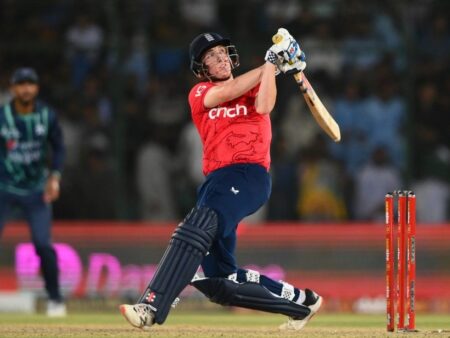India has officially scheduled a Champions Trophy semifinal match against Australia, while New Zealand is set to compete against South Africa in Lahore. In a match between two teams already qualified from Group A, India demonstrated their strength by overpowering New Zealand. Defending a score of 249, India’s strong spin bowling attack restricted New Zealand, securing a 44-run victory.
Varun Chakaravarthy spearheaded the spin attack, replacing a fast bowler, Harshit Rana, to strengthen the bowling on Dubai’s worn pitch. Notably, Dubai was where Varun’s career previously faced a setback four years prior at another ICC event. This time, in excellent form, Varun was instrumental, achieving his first five-wicket haul in ODIs. India’s spin quartet collectively claimed 9 wickets for 156 runs, effectively halting New Zealand’s chase, despite a resilient 81 from Kane Williamson.
India’s total of 249 was slightly higher than Pakistan’s score against them at the same venue a week earlier. However, the pitch offered more spin, and with minimal dew in the second innings, India’s decision to focus on spin proved effective. Rohit Sharma quickly introduced spin, bringing in Axar Patel in the sixth over. Earlier, Hardik Pandya, playing as the second fast bowler, dismissed Rachin Ravindra with a well-executed short ball, with Axar taking a good catch.
Varun’s initial delivery was hit for four by Williamson, but he quickly adjusted his length and began to trouble the New Zealand batsmen with his diverse spin variations. In his second over, he bowled Will Young, who played inside the line and edged the ball onto his stumps. Daryl Mitchell, known for scoring centuries against India in the previous World Cup and capable against spin, struggled. India effectively blocked his reverse sweep and limited his scoring options. Mitchell’s struggle against Kuldeep culminated in his dismissal by the left-arm wrist spinner.
A key tactic of India’s spinners was consistently attacking the stumps, even on a turning pitch, making LBW a significant mode of dismissal. Four middle-order batsmen were dismissed in this manner. Tom Latham missed a reverse sweep against Ravindra Jadeja, and Varun dismissed Glenn Phillips and Michael Bracewell, although Bracewell’s dismissal might have been overturned with a review.
Williamson attempted to anchor New Zealand’s innings and benefited from dropped catches. However, with the required run rate increasing, he tried to attack Axar but was deceived by the flight of the ball and stumped for 81 off 120 balls. This effectively ended New Zealand’s chances and allowed Varun to take two more wickets, completing his five-wicket haul.
Prior to Varun’s impressive performance, it was New Zealand’s fast bowler, Matt Henry, who also achieved a five-wicket haul (5 for 42) after New Zealand chose to bowl first. Henry troubled India’s top order, reminiscent of his performance in the World Cup semifinal six years ago. After starting with shorter deliveries, Henry pitched one fuller ball to dismiss Shubman Gill LBW.
Virat Kohli aggressively tried to disrupt Henry’s line and length, managing to get a short and wide delivery. However, Kohli’s cut shot was caught by a spectacular diving catch from Phillips.
India was at 30 for 3. Similar to a situation six years prior in Manchester, a left-right batting partnership provided some stability. Axar, batting at No.5, joined Shreyas Iyer to rebuild the innings. Their partnership started cautiously, going without a boundary for 51 balls. Axar initially scored slowly before hitting a boundary.
Bracewell, surprisingly, was not as effective on a pitch that favored spin. Iyer’s approach of stepping out and then rocking back to hit boundaries disrupted Bracewell’s bowling. Iyer also scored boundaries off William O’Rourke, helping India reach 100 runs in the 25th over. Axar provided solid support, handling New Zealand’s spinners effectively.
Iyer reached a vital half-century off 75 balls, continuing his strong ODI record against New Zealand. However, as in the previous match at this venue, starting batsmen found it challenging, and the 98-run partnership ended with Axar’s dismissal.
Iyer and KL Rahul formed another quick partnership, but Iyer’s tendency to attack short balls led to his dismissal. Rahul was soon outsmarted by Mitchell Santner’s sharp spin.
At 182 for 6 in the 40th over, India risked not completing their full 50 overs. However, Hardik Pandya’s crucial innings of 45 and a 41-run partnership with Jadeja helped India recover. Henry ended this partnership and took two more wickets, finishing with another five-wicket haul, but Varun’s performance overshadowed his effort.
Brief scores: India 249 in 50 overs (Shreyas Iyer 79, Hardik Pandya 45; Matt Henry 5-42) defeated New Zealand 205 in 45.3 overs (Kane Williamson 81; Varun Chakaravarthy 5-42) by 44 runs







